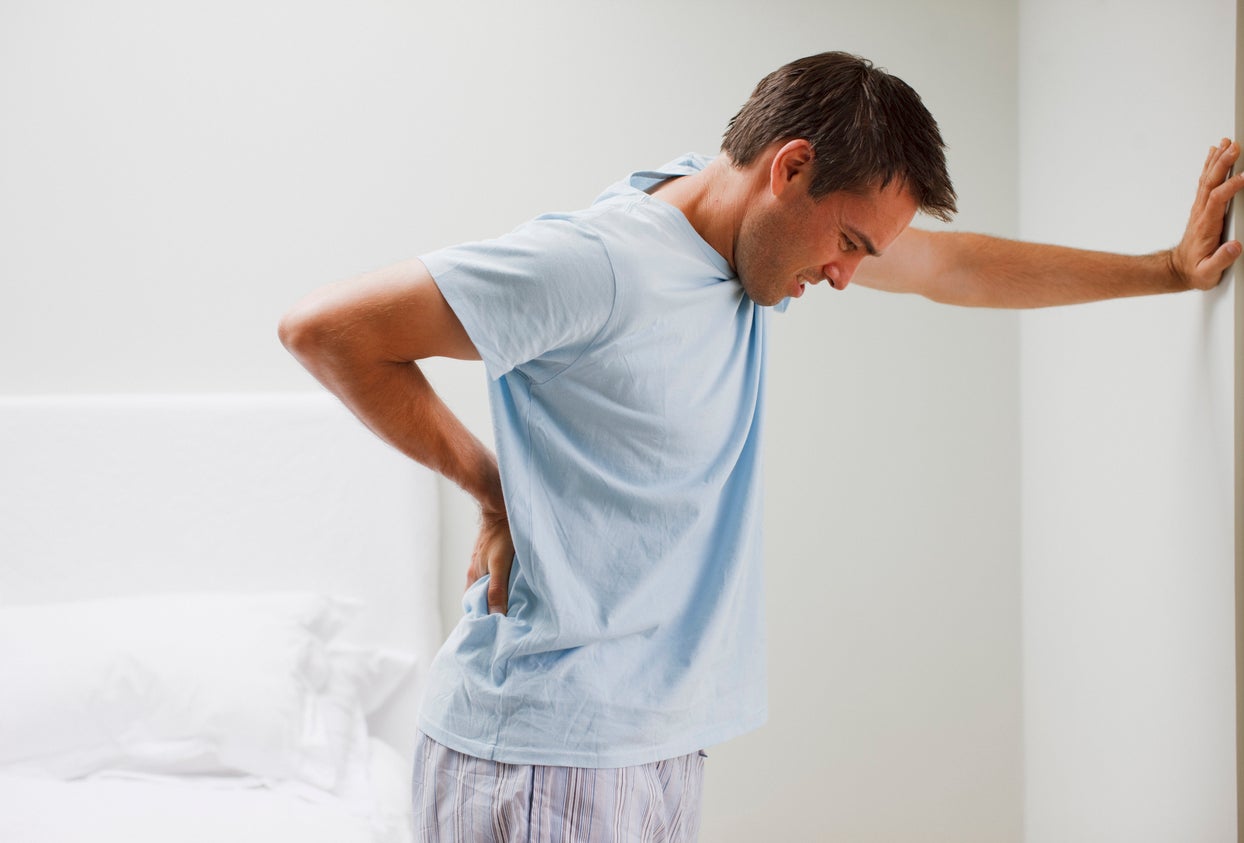Dear NICE, some thoughts on your nonsensical guidance for chronic pain sufferers
Those suffering from primary chronic pain, with no known cause, may find it harder to get painkillers prescribed as a result of NICE’s unwelcome contribution


A question for NICE, that’s the National Institute for Health & Care Excellence: Are you on drugs? Have you decided to deny medication for people in chronic pain “with no known cause” because you fancy getting your hands on their pills?
Hold your horses, libel lawyers, I am of course well aware that the worthies who sit on that body would be horrified at the mere thought. My statement is patently ridiculous but no more ridiculous than NICE’s latest missive on chronic pain, unless, that is, you think exercise or acupuncture have suddenly become the cures for agony.
Let me explain. There are two types of chronic pain. If there’s a known cause, for example, osteoarthritis, rheumatoid arthritis, ulcerative colitis, endometriosis, it’s called chronic secondary pain.
NICE’s guidance is aimed at those suffering from “primary chronic pain”, for which there is no known cause. It says they shouldn’t be prescribed analgesics – painkillers to you and me – because they don’t work. And that’s where the first problem comes in.
Some of the people in the “primary” group should clearly be in the “secondary” group, because their pain does have a cause. It just hasn’t been diagnosed. Diagnoses can take a lot of time. I’m close to someone with rheumatoid arthritis, for example. It took two years for doctors to work out what was causing their pain.
My own neuropathic pain has a known cause (severed sciatic nerves) but my hip pain does not (yet). An ultrasound scan revealed that it may be a hernia. Two surgeons then disagreed. It seems fairly obvious that it’s related to having a truck on top of me. But now when I ask precisely why it hurts like hell, I just get shrugs.
Women can be particularly vulnerable here. I’ve spoken to far too many who’ve been told that their problems are “all the in the mind” only to find, after much banging of heads against brick walls, that what was dismissed as psychological was actually frighteningly physiological.
These people are now at risk of going through horrific pain that meds could dull down.
Read more:
On to the next problem: the suggested alternatives for dealing with the pain of the “unknown” cause. This is what really makes me think it’s not just the people in pain who’ve been popping too many pills. “The guideline makes recommendations for treatments that have been shown to be effective in managing chronic primary pain,” the guidance states. “These include exercise programmes and the psychological therapies CBT and acceptance and commitment therapy (ACT). Acupuncture is also recommended as an option.”
And, goodness me, where do you start? Where do you start? Look, exercise is a wonderful thing. If you’re able to do it (and not everyone is), it’ll do you good. With the aid of a wheelchair, it’s something I regularly partake in despite the occasional crap thrown my way from ablest boneheads who struggle with the concept of someone physically unable to jog finding an alternative, wheeled way of getting moving.
But the idea that a run around the block will zap the torment of people in chronic pain is patently ridiculous. It doesn’t do a damned thing for my hip.
Another NICE suggestion is Cognitive Behavioural Therapy (CBT). Talking therapies can be marvellous. Trouble is, is there’s not a lot of talking therapy available to those who can’t pay to get it privately. Has anyone at NICE looked at the waiting lists and the hoops one has to jump through to get on them before adding tens of thousands more to the number?
This isn’t just an issue with CBT. I’ve been tweeting with other people in pain today. One spoke highly of hydrotherapy. Another mentioned sports massage. Neither was able to access them at the moment, either as a result of Covid or because they aren’t available on the NHS in their area. It’s no good people at NICE suggesting alternatives to painkillers when those alternatives simply aren’t available.
So to another NICE idea: Acupuncture. Forget the pills. That one made me wonder if we hadn’t all been transported to the Bizzaro world that sometimes features in Superman comics.
Read more:
Listen, I’m not here going to besmirch those who say they’ve benefitted from it. Good for them. But NICE says that its “don’t prescribe painkillers” guidance is based on scientific evidence. It seems to me there’s a notable lack of that to support the use of acupuncture, which is considered by many doctors to be a pseudoscience.
Paul Matthew, assistant professor of neurology at Harvard Medical School, said this in a 2017 blogpost on the subject: “In general, the effectiveness of standard treatment (medication and injectable therapies) is supported by much stronger scientific evidence than acupuncture, including large clinical trials with thousands of subjects.”
It seems like what NICE is effectively saying is that you don’t need one treatment because, science, but you could try this other treatment and let’s just put the science to one side.
Did none of the people who contributed to this not read it through this guidance and spot any of the gaping holes in its logic? How is it that I can see them and they can’t?
Listen, I get it. The over-prescription of opiate-based pain killers is a problem that has in too many cases created another very big problem (addiction). But here’s yet another logical flaw in NICE’s approach: the suggestion that antidepressants could be prescribed to pain sufferers, swapping one potentially problematic pill for another.
This points to a theme running through all this: the dismissive and patronising suggestion that people’s pain is “all in the mind” dressed up in authoritative looking language that speaks of “pain management plans” and attempts to sound compassionate where I detect high handed callousness.
Maybe we do need to have a discussion about pain and the way it is treated. But this is not a good contribution to it and I fear the consequences for those with unsympathetic GPs who suddenly find themselves without medication that may work for them.
This guidance urgently needs a rethink. Sadly, there may be torture looming for those in torment before we get one.

Join our commenting forum
Join thought-provoking conversations, follow other Independent readers and see their replies